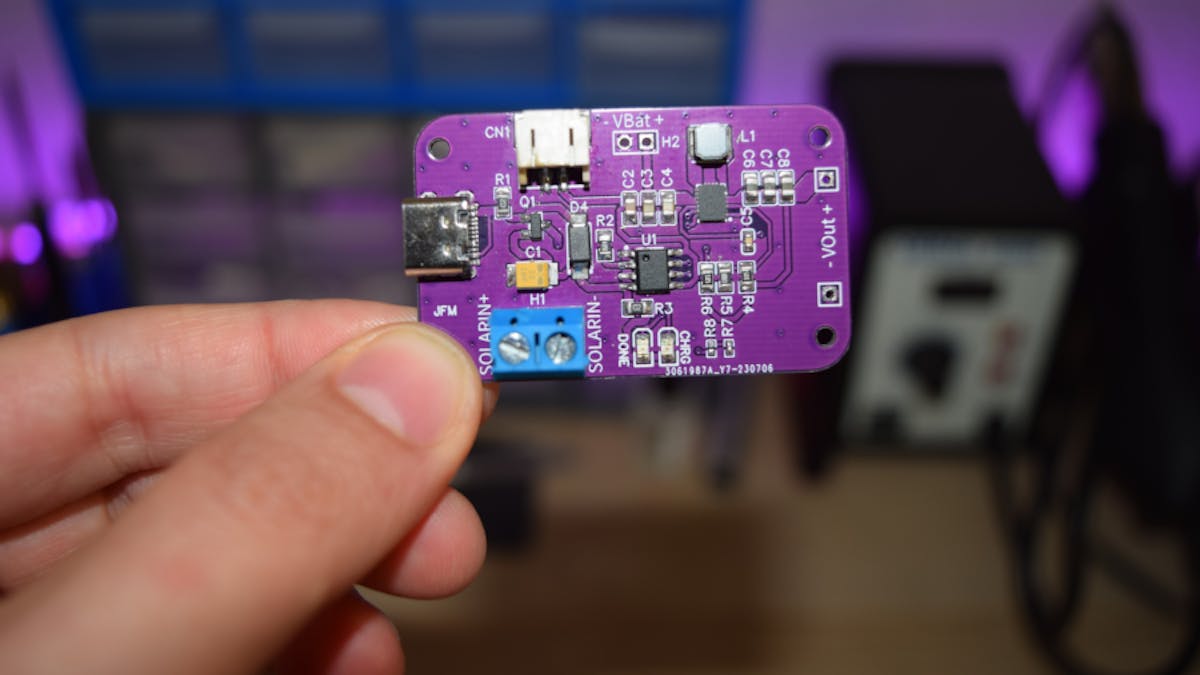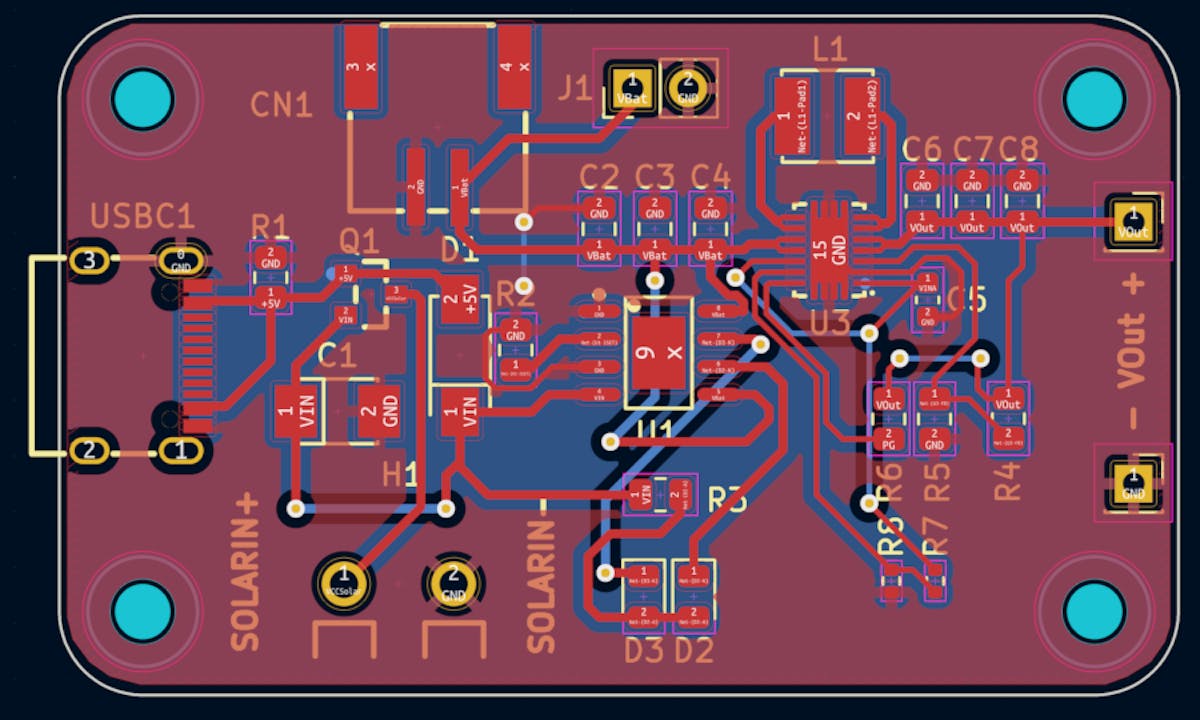Juan Flores' Solar Buck-Boost Module Makes It Easy to Switch Between Energy Harvesting and USB Power
Designed to charge a lithium-polymer battery from USB or a solar panel automatically, this compact module works with panels up to 5V.

Embedded systems engineer Juan Flores has built a compact little board designed to make it easier to add solar power to your next build: the Solar Buck-Boost module.
"This project is a module that allows charging a Li-Po [Lithium Polymer] battery from two different energy sources and provides a constant output voltage independent of the battery voltage, with minimal losses to ensure long-lasting operation in low-power applications," Flores explains. "It works correctly with a solar panel, hence its name."
The compact board, which has a USB Type-C connector at one end, a battery connector at the top, voltage output pins at the other end, and a screw terminal for a solar panel at the bottom, is built around two core devices: the Consonance Electronics CN3063 lithium-polymer charging chip and a Texas Instruments TPS63020 for handling voltage regulation on the output.
"This component is very interesting," Flores writes of the TPS63020, "as it allows configuring the output voltage based on the voltage divider connected to the feedback pin (pin 3). The datasheet already gives some values for a 3.3V output, which is what I was initially looking for, but we could basically leave the 180k resistor and change the 1M resistor to obtain different voltages, such as replacing the 1M resistor (R4) with a 1.6M one for a 5V output."
The charging circuit acts as an N-type MOSFET with the drain connected to the solar panel and the gate to the USB input: if power is present on the USB connector it is automatically used to charge the battery, and if not the solar panel is used instead.

"It would work with solar panels from 4.5V to 6V, but ideally, a maximum of 5V should be used," Flores writes, for the simple reason that a solar output higher than 5V would take priority over the USB connection.
"Also, the charging speed depends on the panel's power. The one I use is 0.2W at 5V, meaning it generates 40mAh at full performance, so it would take 10 hours in full sun to charge a battery like the one in [my] video (500mAh)."
The full project write-up is available on Hackaday.io, with KiCad project files and schematics available on GitHub under an unspecified license.
Freelance journalist, technical author, hacker, tinkerer, erstwhile sysadmin. For hire: freelance@halfacree.co.uk.


